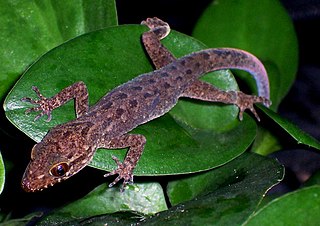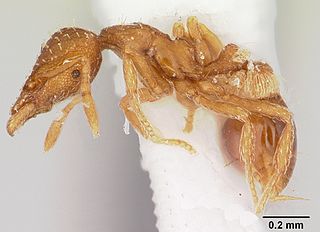
An octopus is a soft-bodied, eight-limbed mollusc of the order Octopoda. The order consists of some 300 species and is grouped within the class Cephalopoda with squids, cuttlefish, and nautiloids. Like other cephalopods, an octopus is bilaterally symmetric with two eyes and a beaked mouth at the centre point of the eight limbs. The soft body can radically alter its shape, enabling octopuses to squeeze through small gaps. They trail their eight appendages behind them as they swim. The siphon is used both for respiration and for locomotion, by expelling a jet of water. Octopuses have a complex nervous system and excellent sight, and are among the most intelligent and behaviourally diverse of all invertebrates.

Blue-ringed octopuses, comprising the genus Hapalochlaena, are four extremely venomous species of octopus that are found in tide pools and coral reefs in the Pacific and Indian oceans, from Japan to Australia. They can be identified by their yellowish skin and characteristic blue and black rings that can change color dramatically when the animal is threatened. They eat small crustaceans, including crabs, hermit crabs, shrimp, and other small sea animals.

Cyrtodactylus is a diverse genus of Asian geckos, commonly known as bent-toed geckos, bow-fingered geckos, and forest geckos. The genus has 361 described species as of 2024, which makes it the largest of all gecko genera.

Grimpoteuthis is a genus of pelagic cirrate (finned) octopods known as the dumbo octopuses. The name "dumbo" originates from their resemblance to the title character of Disney's 1941 film Dumbo, having two prominent ear-like fins which extend from the mantle above each eye. There are 17 species recognized in the genus.

The brush-tailed phascogale, also known by its Australian native name tuan, the common wambenger, the black-tailed mousesack or the black-tailed phascogale, is a rat-sized arboreal carnivorous marsupial of the family Dasyuridae, characterized by a tuft of black silky hairs on the terminal portion of its tail. Males of this species do not live past the age of one, as they die after reproducing.

The mimic octopus is a species of octopus from the Indo-Pacific region. Like other octopuses, it uses its chromatophores to disguise itself. It is noteworthy for being able to impersonate a wide variety of other marine animals. While many animals mimic either their environment or other animals to avoid predation, the mimic octopus and its close relative the wunderpus are the only ones known to actively imitate several animals in order to elude predators.

The Australian weasel shark is an uncommon species of ground shark in the family Hemigaleidae. It inhabits shallow waters off northern Australia to a depth of 170 m (560 ft); smaller sharks frequent sand and seagrass habitat and shift to coral reefs as they grow older. A slim, drab species reaching a length of 1.1 m (3.6 ft), it has sickle-shaped fins with dark tips on the second dorsal fin and caudal fin upper lobe. Its upper teeth are broad with strong serrations only on the trailing edge. The lateral line along each side is prominent and exhibits a downward curve below the second dorsal fin.

Strumigenys metazytes is a species of ant that has a distinct diastema on the basal portion of the mandibles with 4 sharp teeth and the species has small hairs. The species was described by Bolton in 2000.
The Caspian lamprey, Caspiomyzon wagneri, is a species of lamprey native to the Caspian Sea, and a member of the Petromyzontidae family. This species is a non-parasitic lamprey that feeds on animal carcasses.

The Diplodactylidae are a family in the suborder Gekkota (geckos), with over 150 species in 25 genera. These geckos occur in Australia, New Zealand, and New Caledonia. Diplodactylids are the most ecologically diverse and widespread family of geckos in both Australia and New Caledonia, and are the only family of geckos found in New Zealand. Three diplodactylid genera have recently been split into multiple new genera.

Octopus tetricus, the gloomy octopus, the common Sydney octopus, or the peachy octopus, is a species of octopus from the subtropical waters of eastern Australia and northern New Zealand. O.tetricus belongs to the Octopus vulgaris species group. All species within the O. vulgaris group are similar in morphology, behaviour, and physiology. The English translation of O. tetricus (Latin) is 'the gloomy octopus'. It is a significant species in the fishing industry in Australia. They play an important role in energy flux between trophic levels in the marine environment.
Amanda "Mandy" Louise Reid is an Australian taxonomist and malacologist. She held the position of collection manager of malacology at the Australian Museum from 2010 to 2023. She is a published researcher and author. Her research has resulted in the description of many species of velvet worms and cephalopods.

Wanda Wesołowska is a Polish zoologist known for her work with jumping spiders. She has described more species of jumping spider than any contemporary writer, and is second only to Eugène Simon in the history of arachnology. Originally a student of ornithology, she developed an interest in jumping spiders while still a student at the Siedlce University of Natural Sciences and Humanities in the 1970s.
Microeledone mangoldi, the sickle-tooth pygmy octopus, is a species of octopus from the family Megaleledonidae. This species was described in 2004, the type specimen being a male which was collected from a depth of approximately 1,000 m (3,300 ft) near the Norfolk Ridge, in the southwest Pacific Ocean near New Caledonia. It is a very small octopus which has a single row of suckers, lacks an ink sac and has a radula with seven rows of teeth with the unique central tooth, called the rechidian tooth, being curved with a grooved tip. The remaining teeth are flat and plate like and so are also distinctive. The smooth creamy-pink body lacks any chromatophores. The specific name honours the Swiss malacologist and marine biologist Katharina Mangold-Wirz (1922-2003).

Wilma M. Blom is a marine scientist. Since 2011 she has been Curator, Marine Invertebrates at Auckland War Memorial Museum.

Sinophorus is a genus of parasitoid wasps belonging to the family Ichneumonidae.

The Caucasian badger or Southwest Asian badger is a species of badger native to Western Asia and some islands in the Mediterranean Sea.













